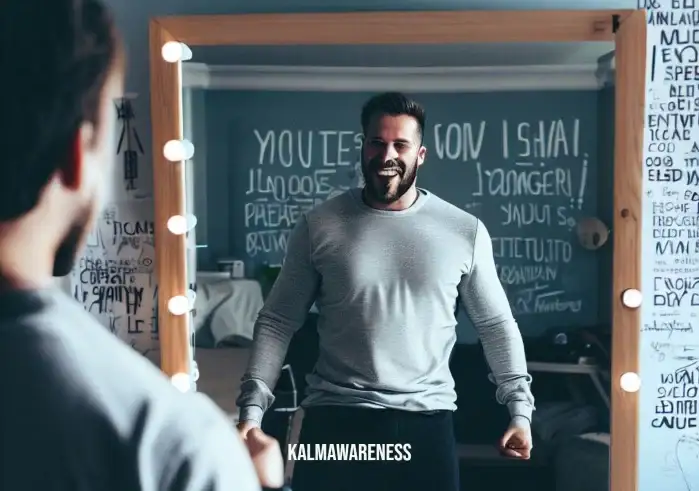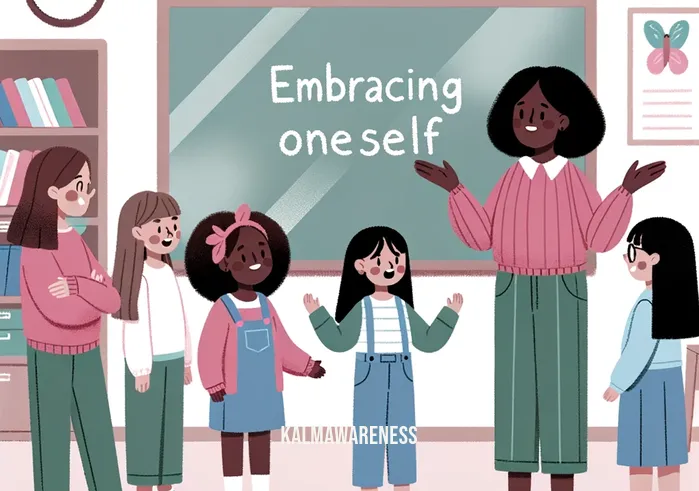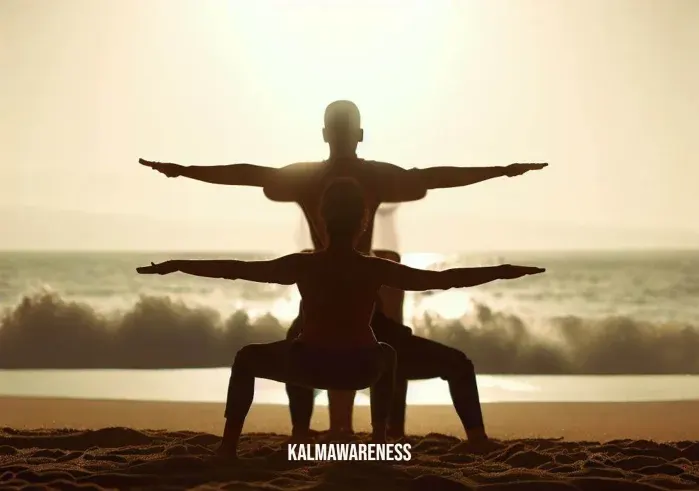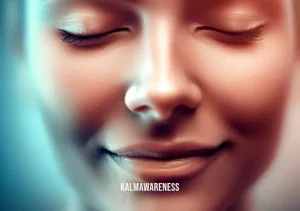What Do You See In The Mirror: An Exploration Of Self-reflection, Self-image, And Perception
The person you see in the mirror isn’t just an image reflected by a piece of glass. It’s a complex composite of your self-perception, societal influences, personal growth, and much more. When you look at yourself, what do you see in the mirror?
Understanding Your Reflection
When we glance at a mirror, we often see beyond our physical appearance. Our internal thoughts, emotions, and experiences come to the forefront, shaping the image we see. This concept, known as self-image, is pivotal in understanding our behaviors, attitudes, and relationships. It’s an essential aspect of personal growth and self-awareness.
The reflection you see is often your biggest critic. You may nitpick about your physical attributes or even ponder about your internal qualities. This aspect of self-critique, while sometimes necessary for personal growth, can often lead to self-deprecating thoughts if not balanced with self-love and acceptance. To discover more about self-image and criticism, check out our article on you are your biggest critic.
The Power of Self-Perception
“We see things not as they are, but as we are.” – Anaïs Nin
The quote above underscores the importance of self-perception in shaping our understanding of ourselves and our surroundings. In the same vein, the person you see in the mirror is largely influenced by how you perceive yourself. If your self-perception is laden with negativity and self-doubt, your reflection will echo these sentiments.
Have you ever asked yourself, “Why do I believe what I believe?” Our beliefs about ourselves are often based on past experiences and external influences. To unravel more about this, delve into our insightful piece on why do I believe.
Mirror Activity: A Tool for Self-Awareness
A simple yet effective practice for self-awareness and mindfulness is the mirror activity. This involves standing in front of a mirror, looking at yourself, and truly acknowledging the person you see. The mirror activity can help us address the question, “What do I see when I look in the mirror?” and encourages us to confront our true selves.
Participating in this activity can be an enlightening experience. As you gaze at your reflection, remember that the person looking back at you is more than just an image. They are a person shaped by experiences, emotions, dreams, and desires. To further understand this activity, you might find our post on mirror activity enlightening.
Embracing Your Reflection
The journey of self-discovery and acceptance starts with embracing your reflection, with all its perfections and flaws. Recognizing your strengths and embracing your weaknesses can empower you to take charge of your life and spark personal growth.
Our post on image of acceptance delves deeper into the process of self-acceptance. It outlines how embracing your reflection can pave the way for improved self-esteem and overall wellbeing.
Stay tuned to continue exploring the world of self-reflection, self-image, and perception in the next part of the article, where we will dive into how mindfulness practices can enhance your perception and relationship with your reflection.

Transforming the Mirror Image: Personal Growth and Mindfulness
In the previous chapter, we delved into self-image and how self-perception influences our reflection in the mirror. Let’s take a step further. How can we positively influence our self-perception and, by extension, transform what we see in the mirror? In this chapter, we will explore personal growth strategies and mindfulness practices that can play a pivotal role in this transformative journey.
Strategies for Personal Growth
- Know Your Desires: Start by understanding your desires and aspirations. Uncovering your true desires can lead to more profound self-awareness, helping you to steer your life towards fulfilling your dreams. For more insights on this, have a look at our blog post on what are my desires.
- Adopt a Positive Mindset: Cultivating a positive mindset is crucial for personal growth. Our blog post all that I know is mirrors inside me emphasizes the need for positivity and offers ways to foster it.
- Control Self-Reflection: While introspection is beneficial, an excessive self-focus can often lead to negative self-perception. Learn how to find a balance with our blog post on control self-reflection.
- Embrace Self-Worth: Recognizing your self-worth can influence your self-image positively. Explore more on this topic with our post on images of self-worth.
- Acknowledge Imperfections: No one is perfect, and accepting your imperfections is part of personal growth. Our post, if you look in the mirror and don’t like what you see, delves into this important aspect of self-acceptance.
The Role of Mindfulness in Perception
Mindfulness refers to the practice of focusing your attention on the present moment, acknowledging and accepting your feelings, thoughts, and sensations without judgment. In the context of our reflection in the mirror, mindfulness can help in several ways:
- It allows us to see ourselves without the filters of judgment, criticism, or societal standards.
- It encourages us to focus on our inner beauty and qualities, rather than just our physical appearance.
- It fosters self-acceptance, leading to a more positive self-perception.
A profound way to foster mindfulness is through mindful seeing. Our post on mindful seeing offers great insights on this mindfulness practice.
Incorporating these strategies and mindfulness practices into our daily lives can dramatically shift our self-perception and transform what we see in the mirror.
| Mindfulness Practice | Link | Benefit |
|---|---|---|
| Exteroceptive Meditation | Exteroceptive Meditation Examples | Enhances sensory awareness |
| Body Awareness | How the Body Knows Its Mind | Improves connection with the physical self |
| Focusing on the Present | The Now Effect | Reduces stress and anxiety |
| Detaching from Thoughts | Thoughts are not facts | Promotes mental clarity |
| Time Awareness | Time Awareness | Enhances mindfulness and presence |
In the next chapter of this article, we will look at specific mindfulness techniques and explore the impact of societal influences on our self-perception. Stay tuned to continue this journey of self-exploration and personal growth.

Seeing Beyond the Mirror: Societal Influences and Shaping Your Self-Perception
In the earlier chapters, we talked about the role of self-reflection and personal growth in influencing what we see in the mirror. Now, let’s explore the impact of external influences on our self-perception. More importantly, how can we take control and shape our perception despite societal standards and expectations?
Societal Standards and the Mirror
What you see in the mirror is often a reflection not just of your physical self, but also of societal expectations and norms. The world around us plays a significant role in shaping our self-perception. Our blog post admire oneself a little too much delves deeper into how societal standards can lead to a skewed self-perception.
As the Buddha once said, “We are shaped by our thoughts; we become what we think.” This highlights the power of our thoughts and perceptions in determining our reality. Explore more insights on this with our collection of Buddha quotes about self.
Influences of Relationships on Self-Perception
The relationships in our life significantly influence what we see in the mirror. They can either strengthen our self-perception or distort it, depending on their nature. The post when your relationship no longer serves you offers valuable insights on navigating relationships that may negatively impact your self-perception.
In the words of the well-known author Anais Nin, “We don’t see things as they are, we see them as we are.” This quote perfectly encapsulates how our relationships and experiences shape our perception of ourselves and the world around us.
Taking Control: Shaping Your Self-Perception
So, how can we take control and shape our perception, despite societal standards, expectations, and the influence of relationships? Here are some strategies:
- Focus on Your Inner Beauty: Instead of letting societal beauty standards define what you see in the mirror, focus on your inner beauty. The post focus on beauty offers valuable insights on this.
- Connect with Your Inner Self: Connecting with your inner self can help you understand your true essence and form a positive self-perception. Explore the concept of assemblage point to understand more.
- Practice Mindfulness: Mindfulness can help you detach from societal expectations and develop a healthier, more balanced self-perception. Check out the post mindfulness for young adults for practical tips.
- Recognize Your Worth: Recognizing your inherent worth, irrespective of societal standards, can help you see a positive and realistic reflection in the mirror. Our post on image of acceptance elaborates on this.
Taking control and shaping your perception of what you see in the mirror is a crucial step in personal growth and self-acceptance.
In the next chapter, we will delve deeper into mindfulness techniques that can help transform what you see in the mirror. Get ready to continue this journey of self-discovery and personal transformation. Remember, as Carl Jung wisely said, “Who looks outside, dreams; who looks inside, awakes.” Let’s embark on this journey of awakening together.

Mindfulness Techniques to Transform What You See in the Mirror
In this chapter, we will delve deeper into mindfulness techniques that can help transform what you see in the mirror. These tools can provide a path to personal growth and greater self-awareness, as well as foster a healthier and more authentic self-perception.
In the profound words of Eleanor Roosevelt, “No one can make you feel inferior without your consent.” Your self-perception is yours to shape. Let’s embark on this journey of personal transformation with some effective mindfulness techniques.
Why Mindfulness Matters
Mindfulness allows you to experience the present moment fully, without judgment or preconceived notions. It allows for self-observation without criticism, fostering a positive and balanced self-perception. It gives you the power to look in the mirror and appreciate what you see, in all your authenticity. Dive deeper into these concepts with our post on exteroceptive meditation examples.
“Mindfulness is the aware, balanced acceptance of the present experience.” – Sylvia Boorstein
Mindfulness Techniques and Their Impact on Self-Perception
To illustrate the transformative power of mindfulness, let’s explore some practical techniques and their potential impact on what you see in the mirror.
| Mindfulness Technique | How It Works | Related Resource |
|---|---|---|
| Body Scan Meditation | A guided meditation where you focus on different parts of the body, promoting body awareness and acceptance. | how the body knows its mind |
| Mindful Seeing | Practicing mindful seeing can help shift focus from societal beauty standards to appreciating your authentic self. | mindful seeing |
| Thought Observation | This practice involves observing your thoughts without judgment, helping to separate self-worth from negative self-talk. | thoughts are not facts |
| Time Awareness Meditation | Focusing on the present moment reduces anxiety about past or future appearances and fosters self-acceptance. | time awareness |
| Self-Acceptance Affirmation | Regularly affirming self-love and acceptance helps build a positive self-perception. | illusion of calm |
By cultivating mindfulness, you can transcend societal standards and expectations, shaping a healthier, more authentic reflection in the mirror. As Jon Kabat-Zinn beautifully puts it, “You can’t stop the waves, but you can learn to surf.”
In our final chapter, we will look at the concept of self-love and acceptance, exploring their role in transforming what you see in the mirror. Get ready to step into the world of self-love, where what you see in the mirror reflects not societal standards, but your inherent worth and beauty. Remember the words of Lao Tzu, “Because one believes in oneself, one doesn’t try to convince others. Because one is content with oneself, one doesn’t need others’ approval.”

The Journey Towards Self-Love and Acceptance – What Do You See in the Mirror?
In the final chapter of our introspective journey, we focus on the pinnacle of self-discovery – self-love and acceptance. When we fully embrace these principles, we change what we see in the mirror. Instead of seeing flaws or imperfections, we see a person of inherent worth, strength, and beauty.
“Love yourself first, and everything else falls into line.” – Lucille Ball
Self-Love: A Healing Balm
Self-love, as discussed in Buddha quotes about self, is not about vanity or narcissism. It is about honoring our worth and accepting ourselves, warts and all. It’s about recognizing our strengths, our vulnerabilities, and our uniqueness. When you look in the mirror and fully appreciate the person looking back at you, you have begun to tap into the power of self-love.
Cultivating Self-Love
Cultivating self-love may seem like a daunting task, but it’s absolutely achievable. Here are some steps you can take:
- Accept Your Flaws: Everyone has flaws. It’s a part of being human. The key is to accept them, learn from them, and use them as stepping stones towards growth. Remember, perfection is an illusion, as explained in our post about the illusion of calm.
- Practice Self-Care: Self-care is an act of self-love. It could be anything from taking a day off to relax, participating in activities that you enjoy, or even allowing yourself to say “no” when you’re overwhelmed.
- Positive Self-Talk: Be aware of how you talk to yourself. Negative self-talk can greatly impact how you see yourself in the mirror. Replace these negative thoughts with affirmations and positive statements about your worth.
Self-Acceptance: Embrace Who You Are
While self-love is about honoring and caring for yourself, self-acceptance is about embracing who you are — your strengths, your weaknesses, your triumphs, and your mistakes. When you accept yourself, you cease to judge yourself harshly when you look in the mirror.
Embracing Self-Acceptance
Here are a few ways to foster self-acceptance:
- Acknowledge Your Achievements: Recognizing and celebrating your achievements, no matter how small, can boost your self-esteem and foster self-acceptance.
- Forgive Yourself: Everyone makes mistakes. Rather than dwelling on them, forgive yourself and view these experiences as opportunities for growth.
- Practice Mindfulness: Mindfulness allows you to live in the present and accept it without judgment. By focusing on the present, you can better appreciate yourself and your journey.
When you reach a place of self-love and self-acceptance, your reflection in the mirror is transformed. You no longer see just physical attributes; you see the sum of your experiences, your growth, your resilience, and your unique beauty.
As we conclude our journey of self-discovery, remember that the path to self-love and acceptance is ongoing. It takes time and patience. But with each passing day, as you stand in front of the mirror, you’ll see a reflection that grows ever more authentic, strong, and beautiful.
“What lies behind us and what lies before us are tiny matters compared to what lies within us.” – Ralph Waldo Emerson
Thank you for joining us on this journey of self-discovery and reflection. We hope that our exploration of “What do you see in the mirror?” has sparked a journey towards self-love and acceptance for you. May your reflection always be a source of strength, pride, and joy.

Reflections and Future Perspectives – What Do You See in the Mirror?
As we venture into the last segment of our contemplative journey, we’ll gaze upon future perspectives and learn how to maintain the progress we’ve made in self-awareness. What do you see in the mirror? And more importantly, how can you ensure that the image remains positive and empowering?
The Power of Mindfulness
“Mindfulness isn’t difficult, we just need to remember to do it.” – Sharon Salzberg.
Mindfulness is the heart of our journey. It allows us to remain present, focusing on our emotions, thoughts, and actions without judgment. The teachings of mindful seeing offer valuable insights about maintaining a mindful lifestyle. This powerful tool facilitates an accurate reflection when we gaze into the mirror.
Embrace Time
Time is an ally in our journey of self-reflection. As explained in our article about time awareness, our perception of time greatly impacts our psychological state. Rather than seeing it as a fleeting commodity, we can perceive time as an opportunity for growth. Embracing time, we can better manage our expectations of personal development, understanding that change doesn’t happen overnight.
Contemplating the Future
Visualizing a positive future is instrumental in shaping your perception of self. When we envision our future selves as successful, content, and self-assured, we lay the groundwork for these transformations to take root. Visualization also influences what you see in the mirror – a future self brimming with potential.
The Road Ahead
Let’s take a glance at the steps we can take to keep a positive and authentic reflection:
- Consistent Self-Reflection: Keep examining your thoughts, feelings, and actions regularly. Take time for introspection, allowing you to keep track of your personal growth journey.
- Cultivate Gratitude: A grateful heart can transform your perception of yourself and the world around you. Keep a gratitude journal or simply take a few moments each day to acknowledge your blessings.
- Embrace Change: Change is the only constant. Embracing change, even when it’s uncomfortable, allows you to grow and evolve, thereby shaping a positive image in the mirror.
- Stay Connected: Maintain your connection with yourself. Whether it’s through meditation, writing, or simply spending time alone, ensure you’re in touch with your thoughts and feelings.
- Self-Care: Last but not least, never neglect self-care. A healthy body houses a healthy mind, both contributing to a positive reflection.
It’s important to remember that our mirror image isn’t a fixed, immutable entity. It evolves and changes, just like us. As we grow, learn, and experience life, our reflection does the same. Therefore, gazing in the mirror can become a rewarding and enlightening journey of self-discovery and growth.
“The real man smiles in trouble, gathers strength from distress, and grows brave by reflection.” – Thomas Paine
Journey’s End
As our journey of introspection and discovery comes to a close, we hope that you’ve found value in our exploration of “what do you see in the mirror?”. Your reflection in the mirror is unique, special, and ever-changing – a testament to the individual you’ve become. Remember, the journey towards self-love and understanding is a lifelong voyage. Embrace it, savour it, and let it guide you towards your true self.
We look forward to accompanying you on future voyages of self-discovery. For more inspiring content on mindfulness, self-awareness, and personal growth, feel free to explore our vast library. Until then, may your reflection always bring you joy, inspire growth, and reveal the beautiful truth of who you are.
“It’s only after you’ve stepped outside your comfort zone that you begin to change, grow, and transform.” – Roy T. Bennett





